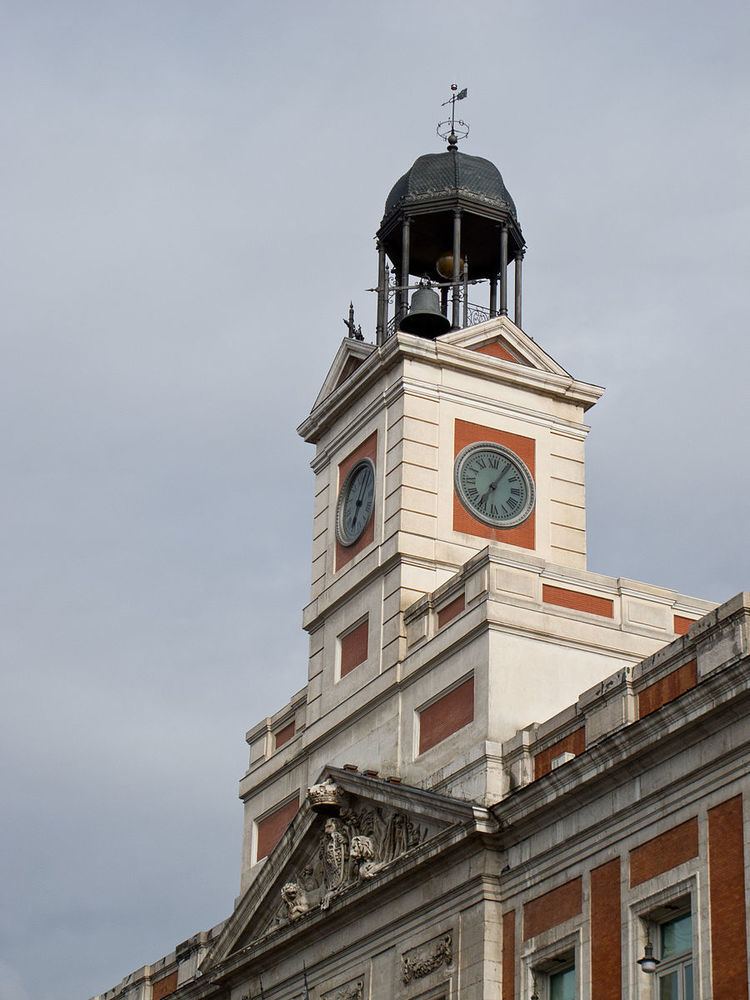 | ||
The Twelve Grapes (Sp. Las doce uvas de la suerte, "The twelve grapes of luck") is a Spanish tradition that dates back from at least 1895 but became established in 1909. In December of that year, some alicantese vine growers popularized this custom to better sell huge amounts of grapes from an excellent harvest.
The tradition consists of eating a grape with each bell strike at midnight of December 31. According to the tradition, that leads to a year of prosperity. In some areas, it is believed that the tradition wards away witches and general evil, although this "magic" is treated like an old heritage, and in modern days it's viewed as a cultural tradition to welcome the new year.
There are two main places where people gather to take the grapes. With family after the dinner, or in the main squares around the country, the Puerta del Sol in Madrid being the most famous place to do it.
The twelve grapes are linked to the Puerta del Sol tower clock, where this tradition started and from where the change of year is always broadcast.
This tradition was adopted also in places with a broad cultural relation with Spain and Latin American countries, as well as Hispanic communities in the United States. Also the Philippines has adopted the tradition.
This tradition is part of the Hispanic Christmas festivities.
